SEVENTY-ONE PERCENT of our planet is covered in water, from oceans to mountain lakes to cenotes. Over time, the names and boundaries of these bodies of water have changed to reflect political, geographical, and historical occurrences. What hasn’t changed, however, is the ability of these natural lakes, lagoons, and bays to instill a sense of calm and wonder to their visitors. From Ko Phi Phi in Thailand to Wineglass Bay in Australia and Lake Tahoe in the US, these are the bluest, clearest waters anywhere on planet Earth.
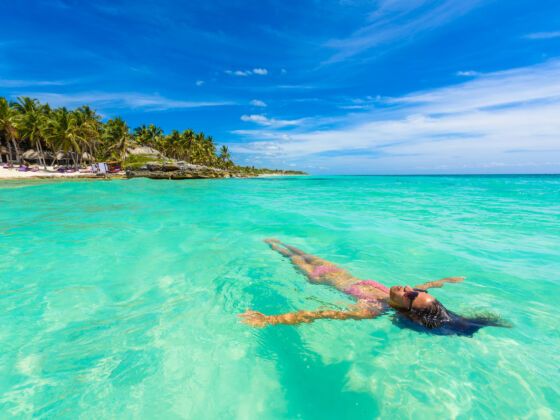
23 of the Bluest, Clearest Waters on the Planet
1. Bora Bora, French Polynesia
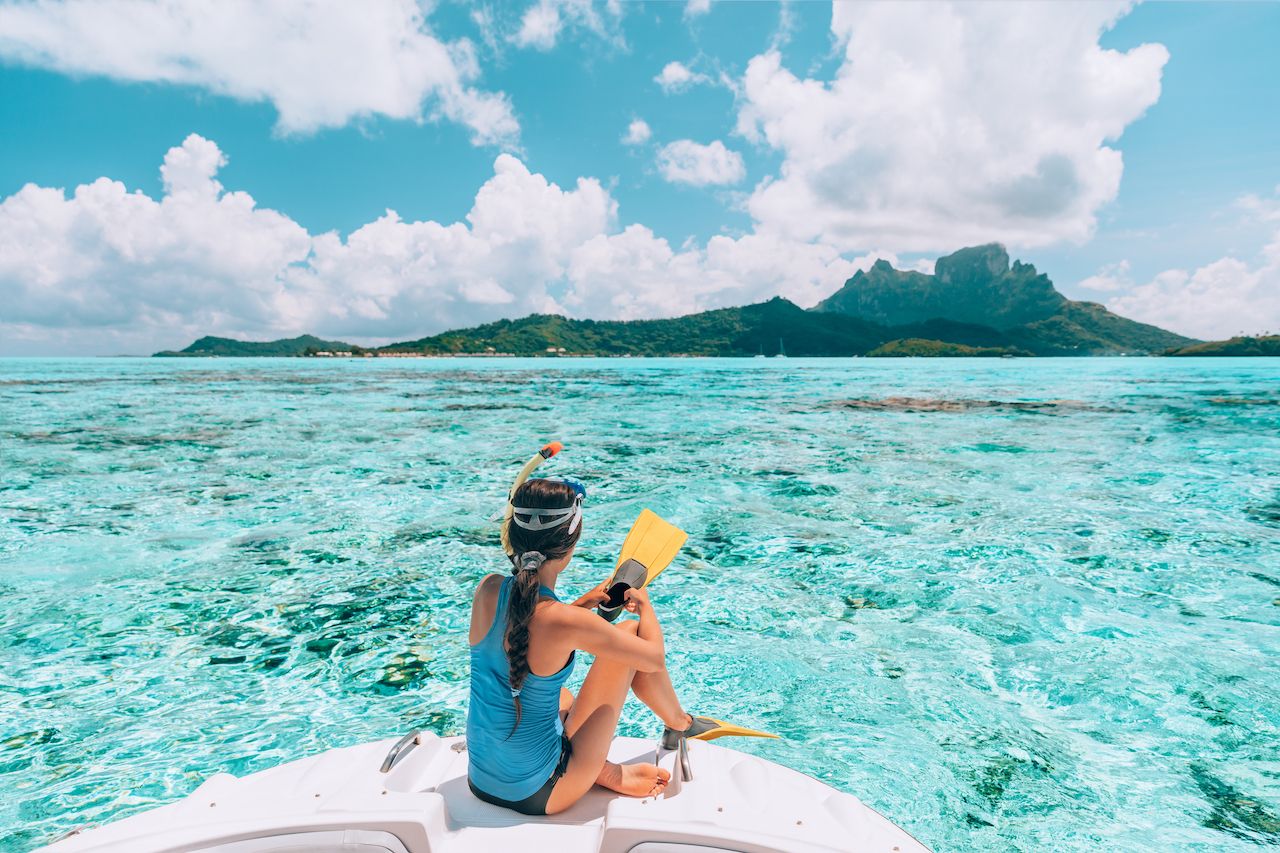
Photo: Maridav/Shutterstock
Home to a multitude of luxury resorts on stilts above the water, Bora Bora attracts tourists from all over the planet looking to get an eyeful of clear, turquoise waters. The fine white sand surrounding the island accounts heavily for the clarity and color. Whether it’s snorkeling, dolphin and whale watching, or a sunset cruise, there is no shortage of ways to enjoy the stunning waters of this Polynesian paradise.
2. Dog Island, Panama

Photo: Ste Lane/Shutterstock
Dog Island is one of the San Blas Islands off the north coast of Panama. It might not be populated solely by dogs, but the fact that it doesn’t live up to its name shouldn’t deter you from visiting. It’s considered to have some of the cleanest water in the world, making it a top snorkeling and diving destination. One of the island’s most distinctive characteristics is the shipwreck on its shores, which you’ll be able to see quite clearly if you do dive.
3. Five Flower Lake, China
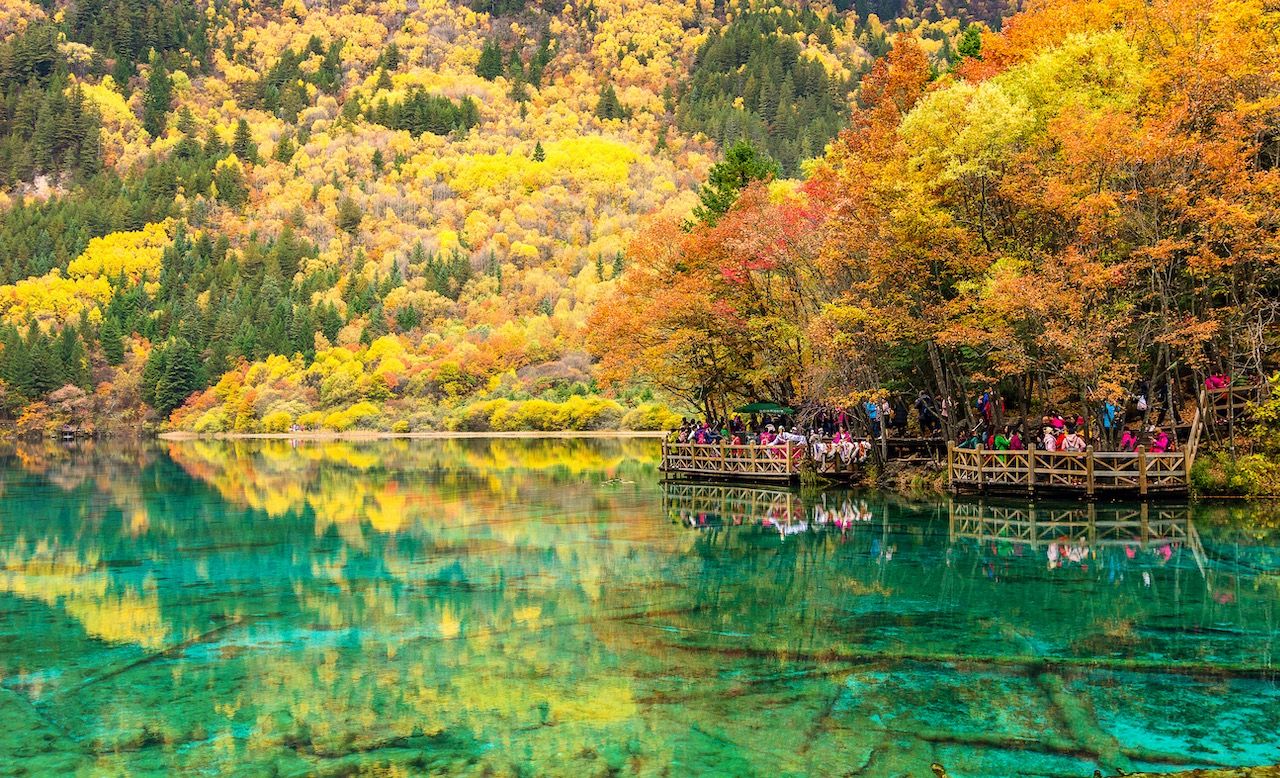
Photo: Raindear/Shutterstock
Five Flower Lake is part of Jiuzhaigou Valley, one of China’s nature reserves and national parks. The clarity of the shallow lake (only 16 feet at its deepest) allows visitors to see the many crisscrossing tree trunks that have fallen into it. The lake takes on a multitude of gorgeous colors from the surrounding forest, including yellow, green, jade, turquoise, coral, and sapphire blue. Due to an underwater hot spring, the water doesn’t freeze in winter, so you can visit all year round.
4. Ko Phi Phi, Thailand
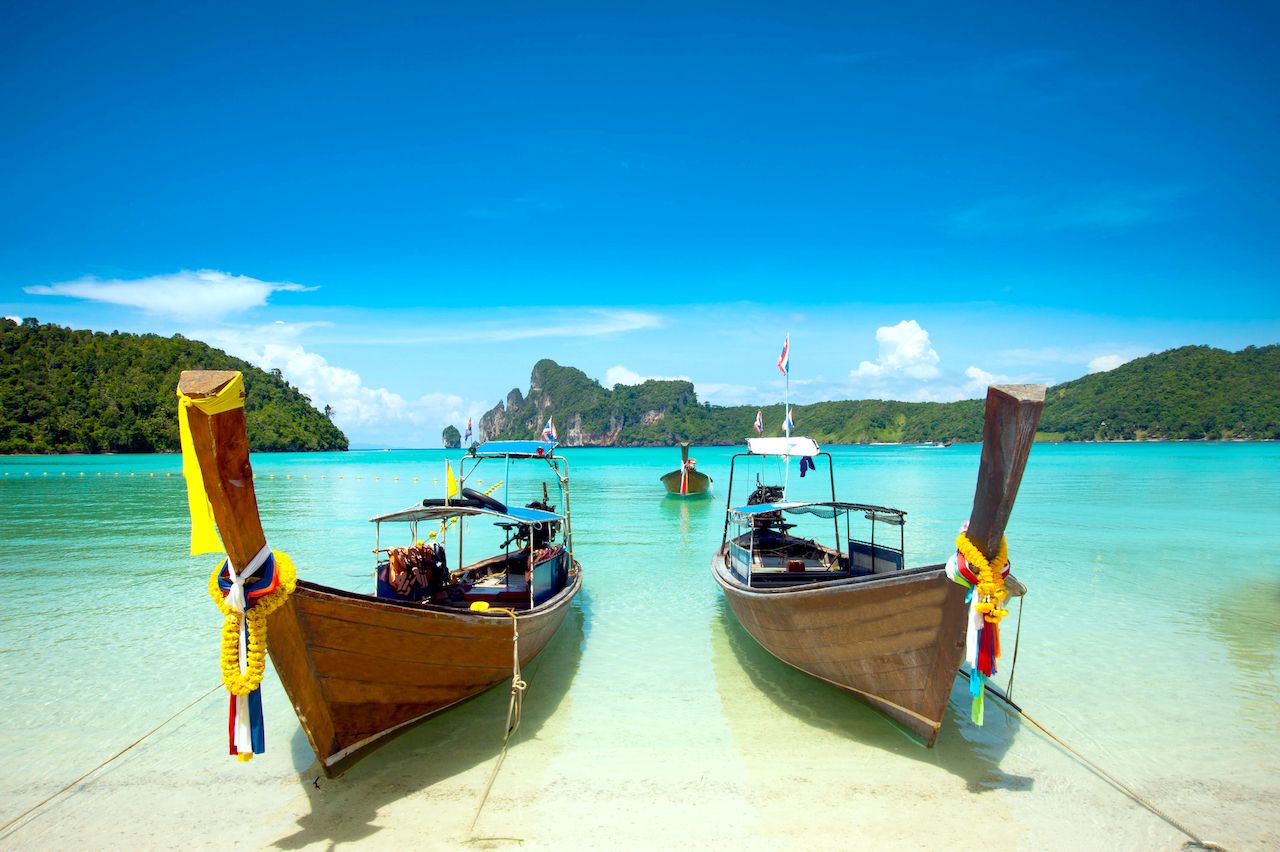
Photo: C_KAWI/Shutterstock
The Phi Phi islands consist of two large islands (Ko Phi Phi Don and Ko Phi Phi Leh), as well as several smaller ones, and is known primarily for its unbelievably clear waters, white-sand beaches, and lush vegetation. The area is also famous for the limestone karsts that protrude out from the sea. The popular movie The Beach, featuring Leonardo Dicaprio as a backpacker, was filmed on Ko Phi Phi Leh.
5. Cayos Cochinos, Honduras
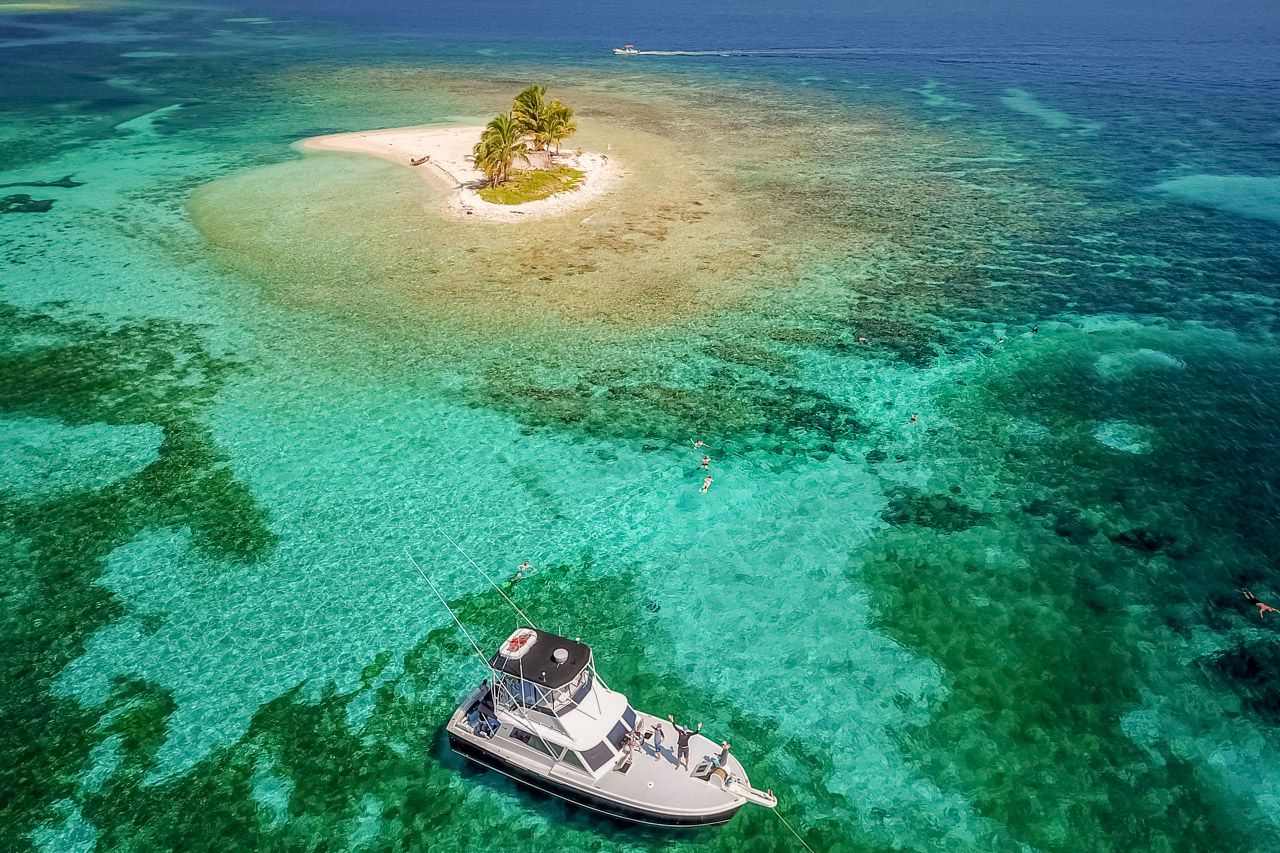
Photo: Kieran Reeves Photography/Shutterstock
Cayos Cochinos (comprised of two small islands and over a dozen small coral cays) are protected by the Honduran government and remain off-limits to commercial fishing, as well as hotels and resorts, which has contributed to the pristine look of the waters. The islands are home to some of the best scuba diving in the world and are only accessible by boat.
6. Moraine Lake, Canada

Photo: Galyna Andrushko/Shutterstock
Located in Alberta’s Banff National Park, in the Valley of the Ten Peaks, Moraine Lake is fed by glaciers. The glacial sediment deposited by the runoff gives the lake its turquoise color. Surrounded by mountains and waterfalls, the setting couldn’t be more dramatic and picturesque.
7. The Maldives

Photo: Firushan Numaan/Shutterstock
The Maldives is an island chain in the Indian Ocean with the lowest elevation of any nation in the world. The waters surrounding the 26 atolls provide for some of the best snorkeling and scuba diving anywhere. From its cabana-like resorts to white-sand beaches and wildlife-viewing experiences, there are plenty of excuses to visit this out-of-the-way paradise.
8. Navagio Beach, Greece
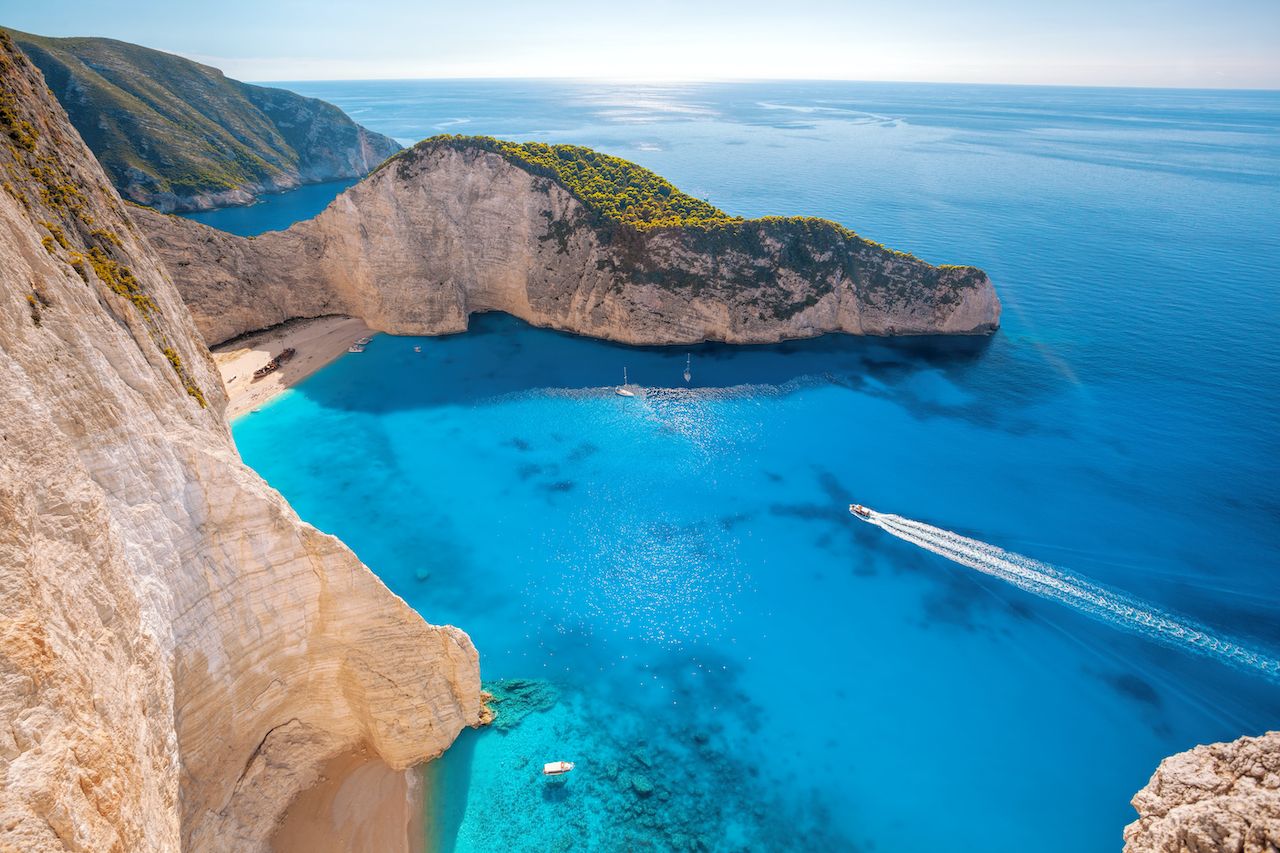
Photo: Samot/Shutterstock
Located off the coast of Zakynthos, one of the Ionian Islands, Navagio Beach (also known as Shipwreck Beach) is famous for its turquoise waters, white sand, limestone cliffs, and huge rusty shipwreck just waiting to be explored. According to legend, the ship belonged to smugglers working on behalf of the Italian mafia.
9. Linapacan Island, Philippines
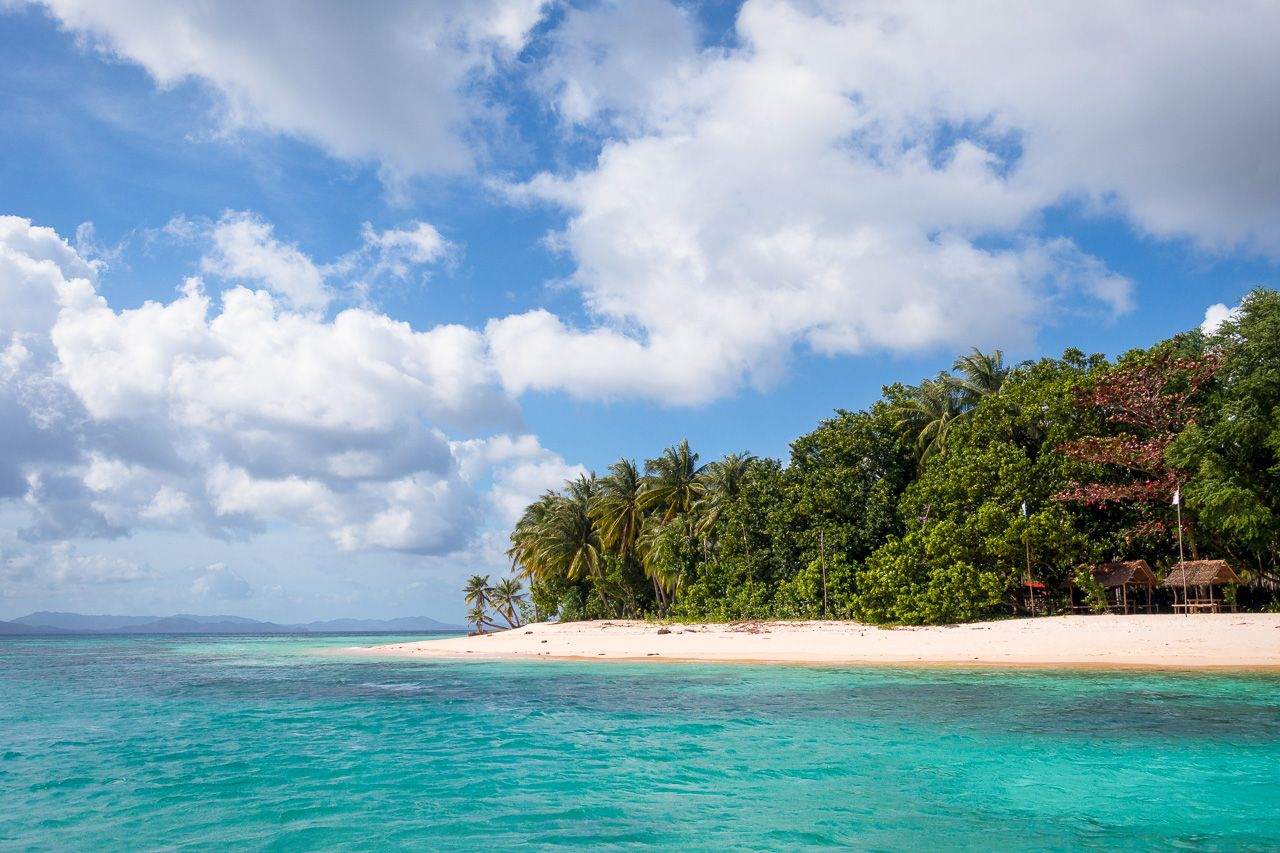
Photo: N8Allen/Shutterstock
Located in the province of Palawan, Linapacan Island is surrounded by 52 mostly deserted beach islands and incredibly clear water. It’s home to the Seniora caves, which are thought to be over a million years old, as well as an old Spanish fortress and jungle trails that will keep hikers busy. Linapacan has two small towns of about 2,000 people each, and you’ll find the area is still relatively free of tourists.
10. Jenny Lake, USA
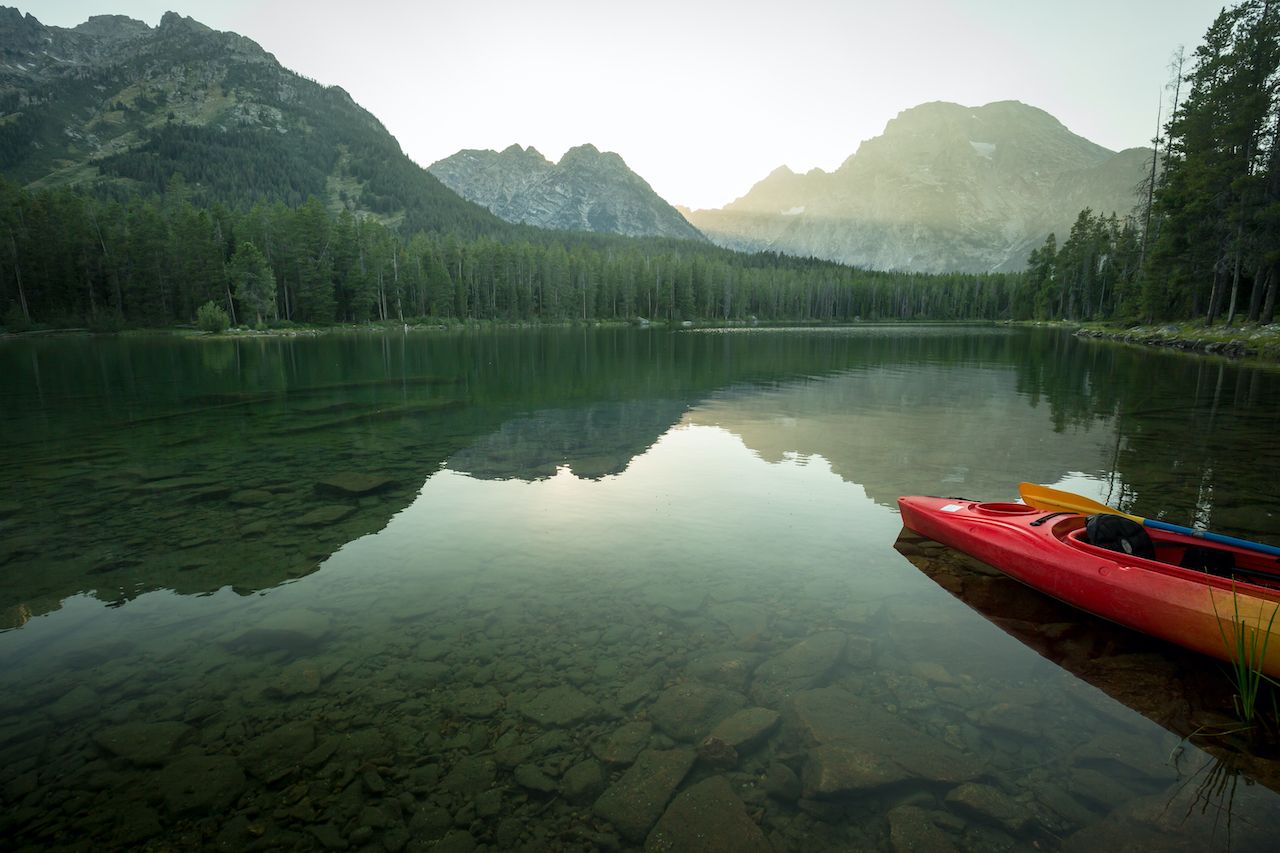
Photo: Evan Austen/Shutterstock
Located just east of the Grand Tetons in western Wyoming, Jenny Lake sits alongside some of the park’s most popular hiking trails, including Cascade Canyon, Hidden Falls, Inspiration Point, and Paintbrush Canyon. It’s one of just two lakes in Jackson Hole where motorboat access is allowed, though this doesn’t disrupt the color or clarity of the water, which often displays some stunning reflections.
11. Lake Pukaki, New Zealand
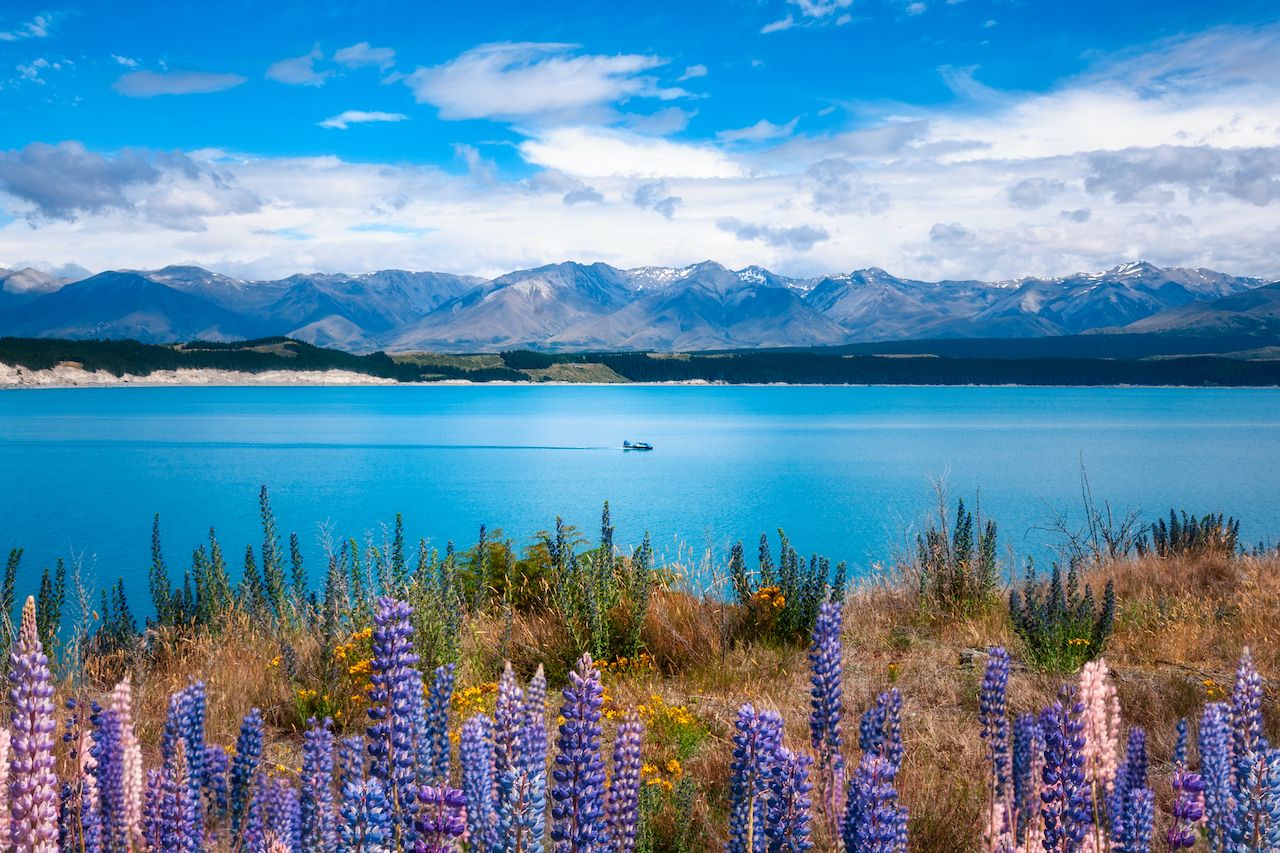
Photo: Daniela Constantinescu/Shutterstock
Lake Pukaki is the largest of three near-parallel lakes on the northern edge of the Mackenzie Basin on New Zealand’s South Island. Deriving its strong blue color from glacial flour (very fine silt particles), New Zealand’s Lake Pukaki is a glacier-fed alpine lake. When the sun gleams off the lake’s surface, it reflects the glacial flour turning it a striking blue color. The surrounding peaks and vast sky make this body of water a must-visit.
12. Mo’orea, French Polynesia
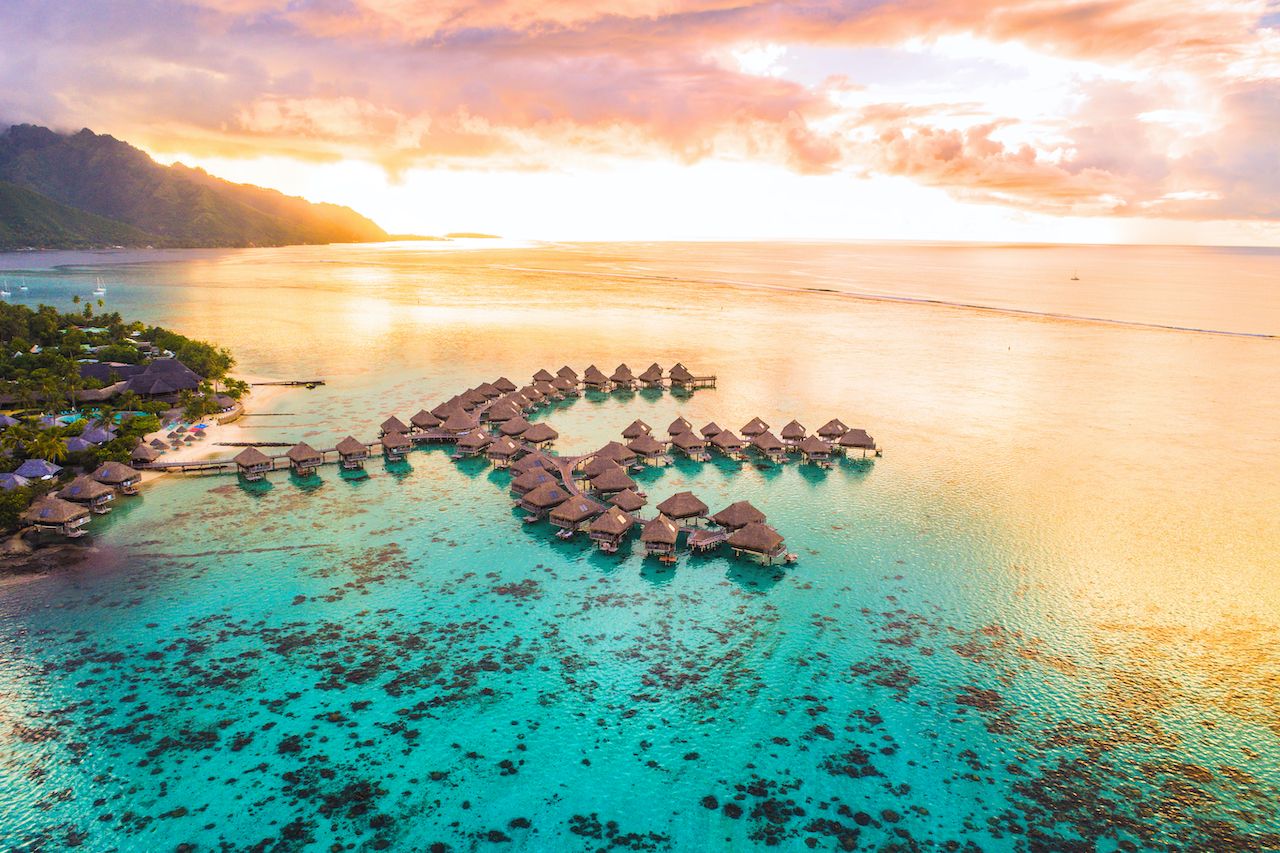
Photo: Maridav/Shutterstock
Thanks to its picture-perfect blue waters and lush scenery, Mo’orea has become a popular honeymoon destination. An island near Tahiti, Mo’orea is defined by its meadows, waterfalls, and its idyllic lagoon. The pastel-painted homes and quiet villages complete the picture of paradise. For those looking for a dose of escapism, you really can’t do better than Mo’orea.
13. Great Barrier Reef, Australia

Photo: Renjie Sun/Shutterstock
The world’s largest coral reef system and one of the most popular diving locations on the planet, the Great Barrier Reef has some of the clearest, bluest waters in the world. Thanks to this clarity, the reef can even be seen from space. It was named a World Heritage site in 1981 and is one of the seven natural wonders of the world. Protected from human encroachment, the reef’s waters are crystal clear, allowing divers to observe the abundant marine life. Climate change is threatening the reef’s fragile ecosystem, however.
14. Corfu, Greece
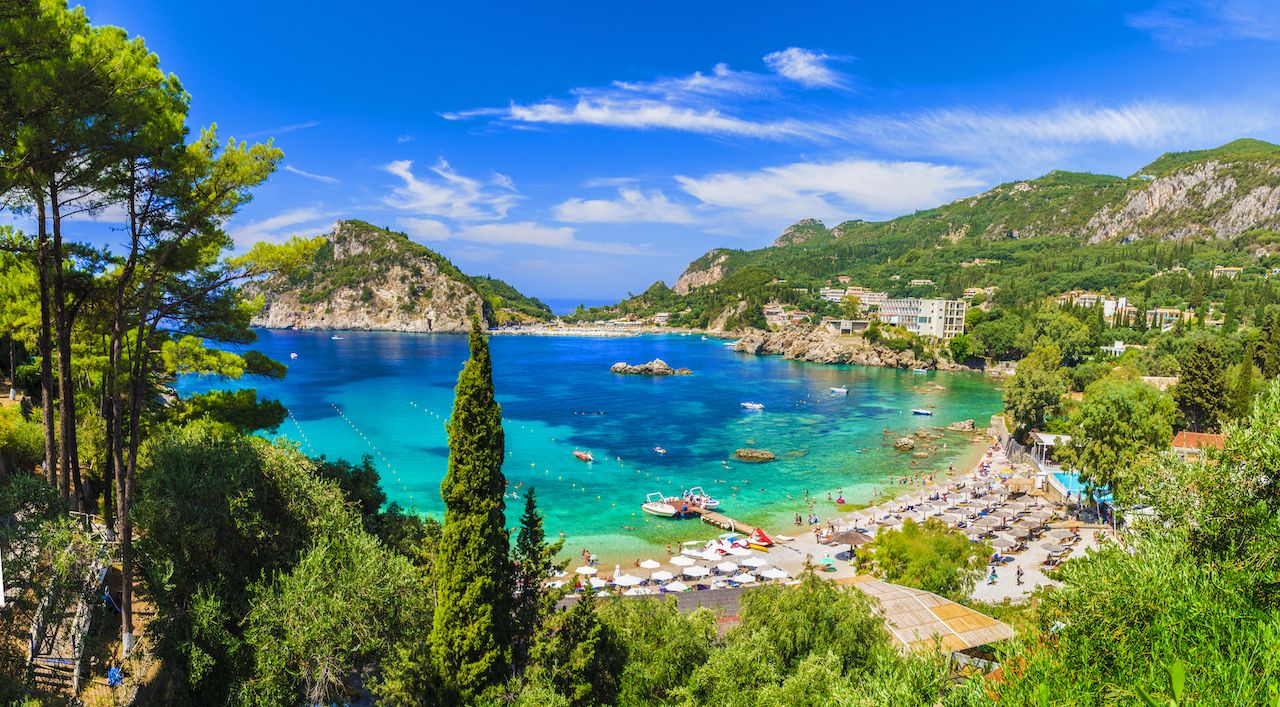
Photo: Balate Dorin/Shutterstock
The waters off the coast of Corfu, the second largest of the Ionian Islands, are amazingly clear. The beach at Canal D’Amour in Sidari is one of Corfu’s most famous for its rectangular creek with sand-colored walls. According to local custom, any couple who swims together through the beach’s sea tunnel will get married.
15. Lake Tahoe, USA
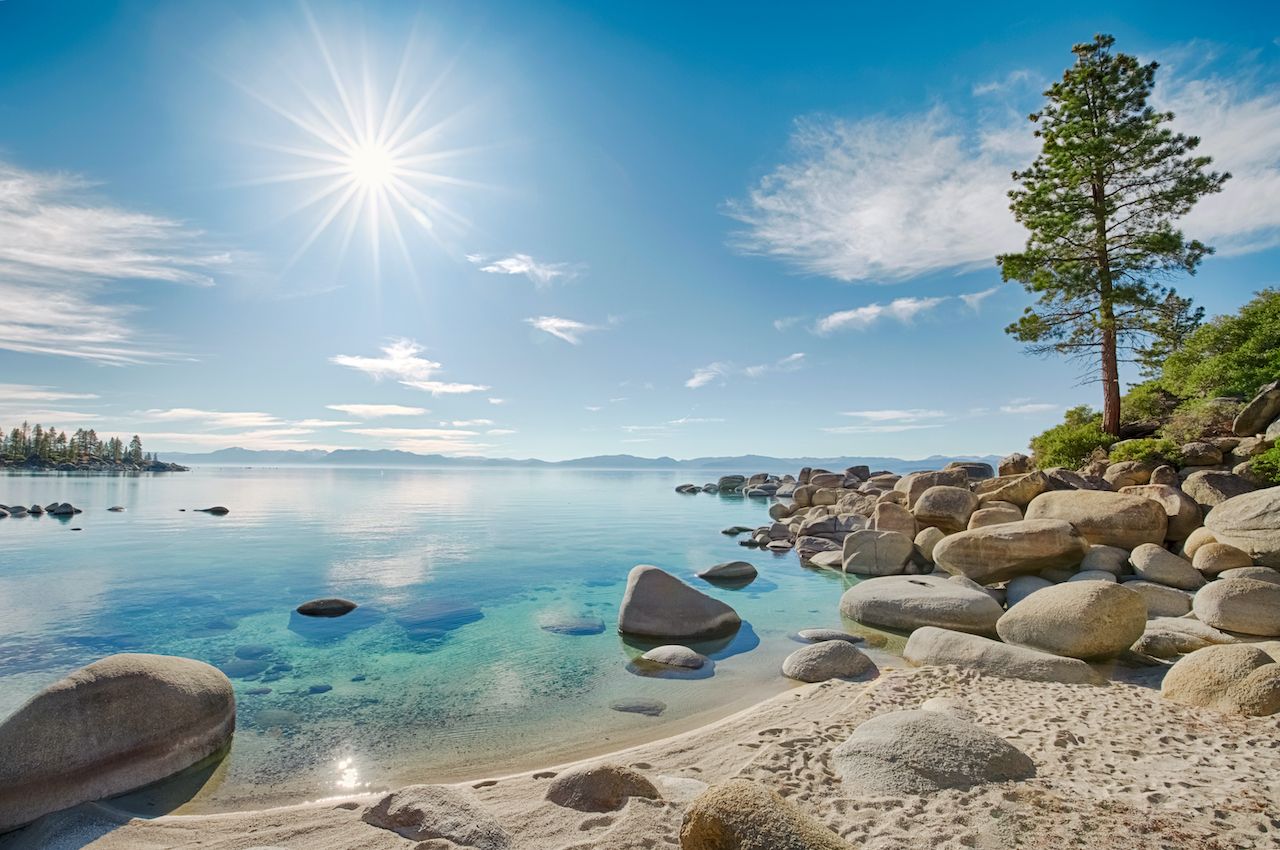
Photo: topseller /Shutterstock
After the Great Lakes, Lake Tahoe is the United States’ largest lake by volume (and the deepest after Oregon’s Crater Lake). While many parts of the lake may not appear clear due to its depth, size, and storm-water runoff, less-impacted spots on Lake Tahoe’s shores show the water’s true colors. From beaches and cycling paths to boating, restaurants, and hiking trails, there’s plenty to do on the lake. You can catch the best views from Emerald Bay by taking the Heavenly Mountain Coaster.
16. Tulum, Mexico
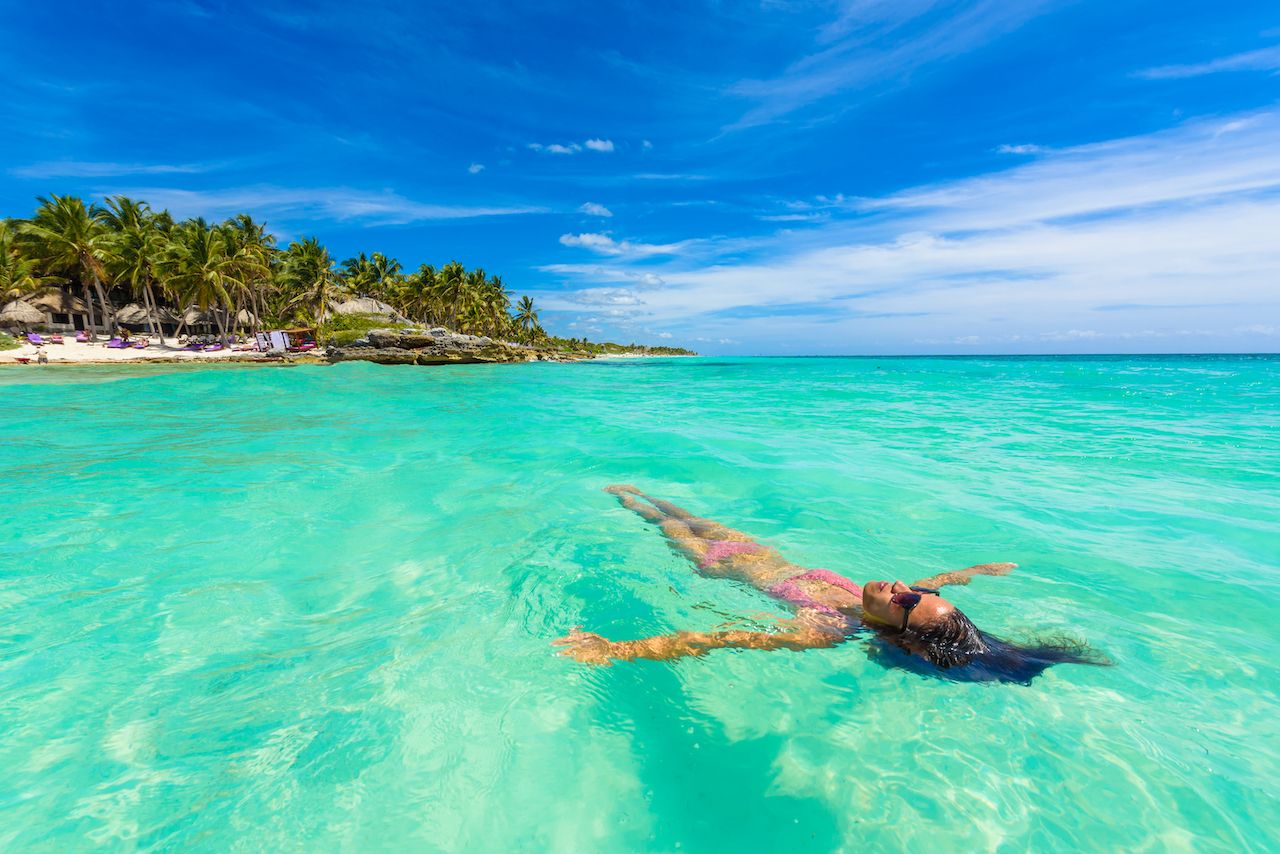
Photo: Simon Dannhauer/Shutterstock
Tulum is home to the ruins of a pre-Columbian Maya city, but tourists also flock there for its white-sand beaches and clear water. Alongside the blue waters lies the Yucatan jungle for an experience either relaxing or rugged — depending on your preference. The many beach resorts and bars make it a fun destination, but the jungle and ruins add rich outdoor and cultural appeals as well. The area is also well known for its cenotes (natural sinkholes), filled with beautiful, clear waters, some of which are open to swimmers.
17. Peyto Lake, Canada
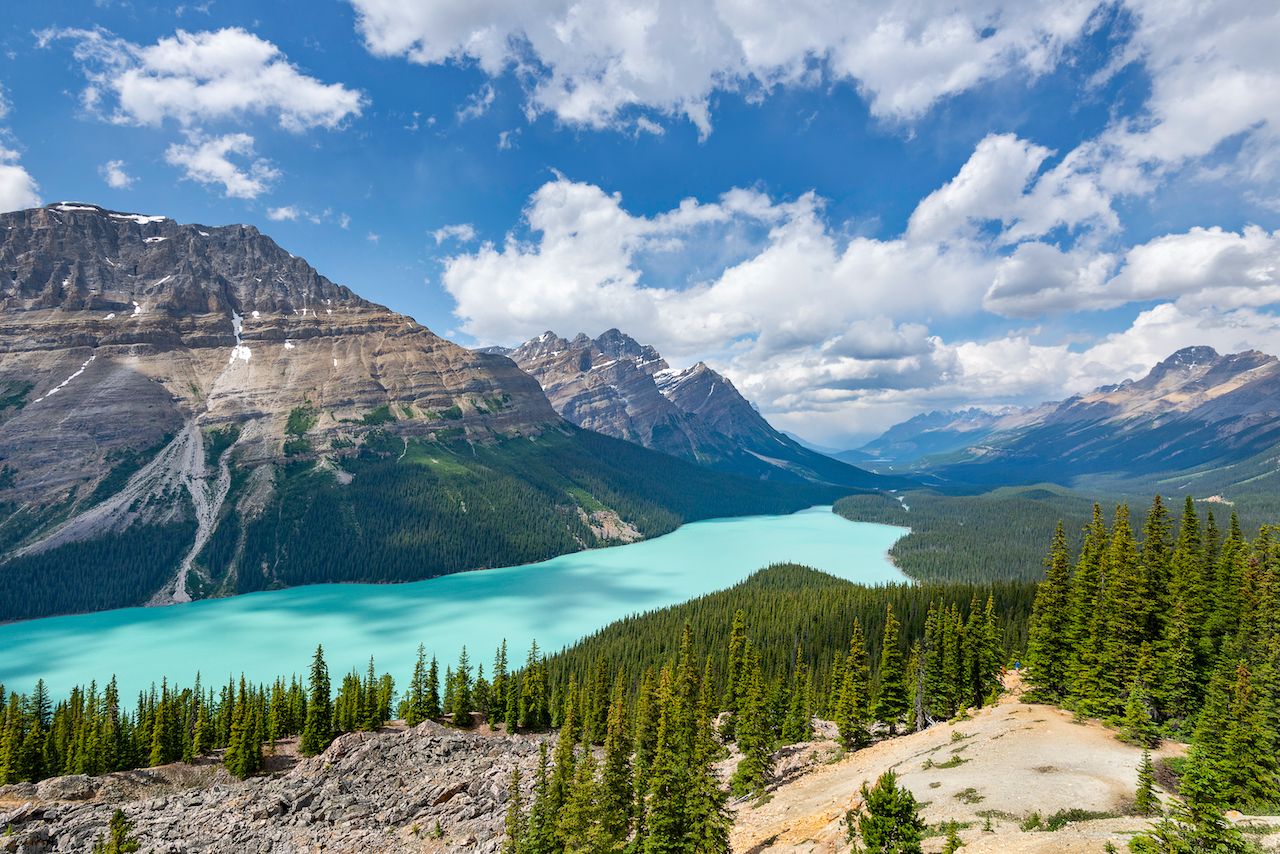
Photo: Levi Coreman/Shutterstock
The rock flour deposited from the glacial runoff gives Peyto Lake its vibrant blue color. Considered one of the most beautiful lakes in the world, Peyto Lake is best viewed from the Bow Summit along the Columbia Icefields Parkway, or the Peyto Lake Lookout in the wintertime. The color is ever-changing, too, according to the season and time of day, so you’ll always be treated to a slightly different experience.
18. Panari Island, Japan

Photo: w.aoki/Shutterstock
Panari, also called Aragusuku, and the other Okinawan islands make up the most remote part of Japan, located a few hundred miles east of Taiwan. Composed of two islands — Jamiji and Shimoji — the Panari Islands are home to just 15 permanent residents. The only way to visit is by joining a tour conducted by a travel agency or dive shop, but its lack of accessibility has helped preserve its landscape and residents’ way of life. If you do make it there, check out Koijigahama beach near the pier on Kamiji Island, where you can relax by the quiet cove.
19. Perhentian Islands, Malaysia
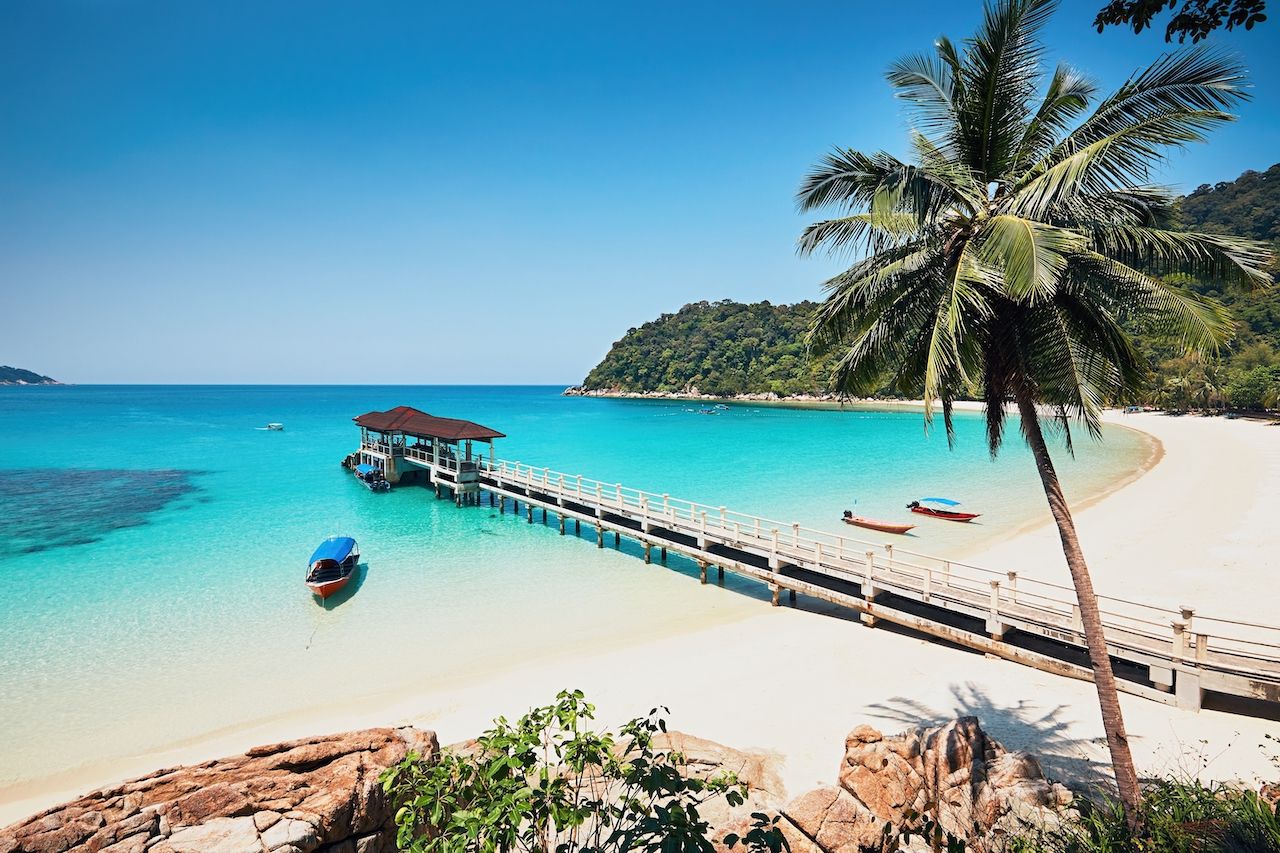
Photo: Jaromir Chalabala/Shutterstock
Two main islands, Perhentian Besar and Perhentian Kesil, make up the Perhentian Islands off the eastern coast of Malaysia. The islands’ crystal-clear water and white-sand beaches makes for an epic snorkeling experience, and jellyfish, turtles, reef sharks, and colorful reef fish can be observed easily by swimmers and divers. Fishing is off-limits since the area is part of the Pulau Redang National Marine Park.
20. To Sua Ocean Trench, Samoa
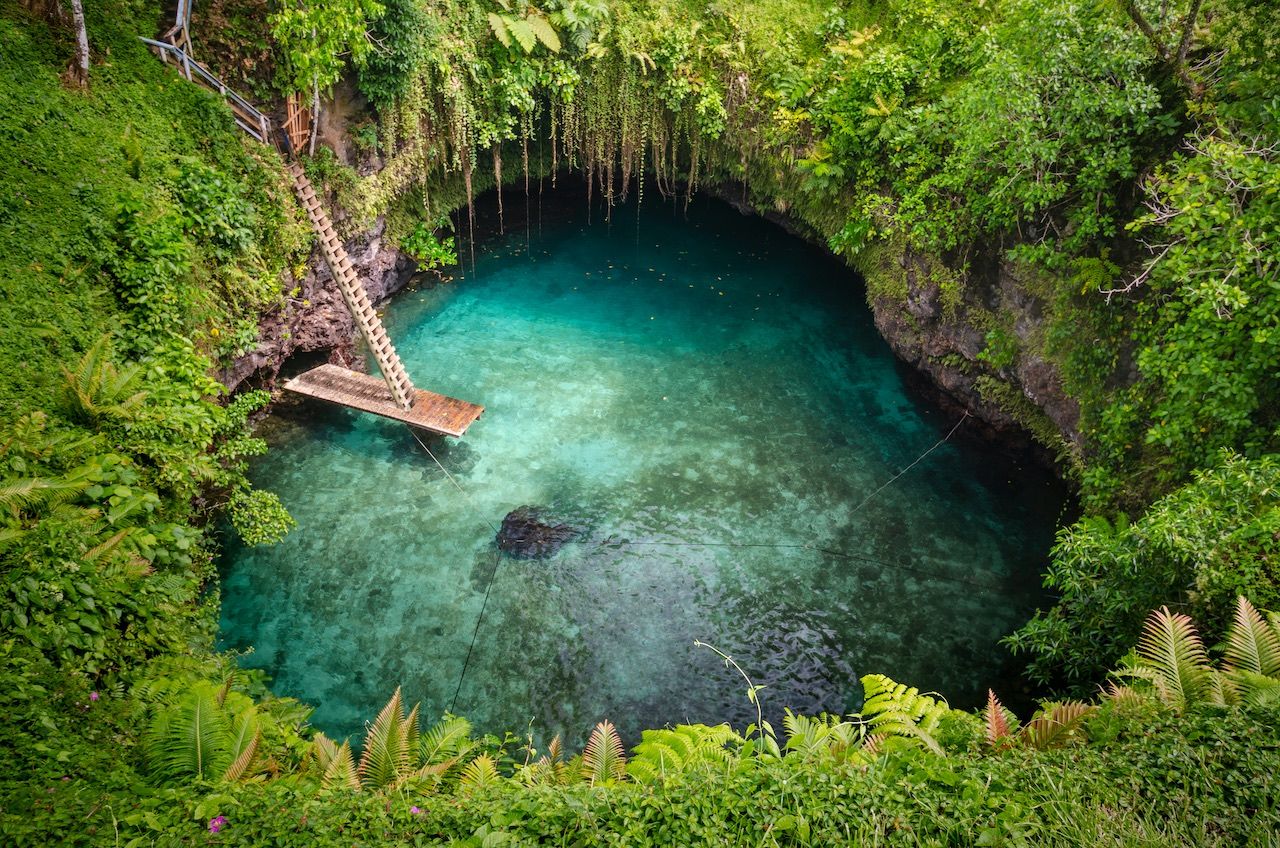
Photo: Martin Vlnas/Shutterstock
Found in Lotofaga, a small village on the island of Upolu, Samoa, the To Sua Ocean Trench is a large swimming area filled with tropical fish and surrounded by lush greenery. The clear, vibrant blue water is fed through a cave leading out to the ocean. To Sua literally translates to “giant swimming hole.” The hole is 98 feet deep and accessible from a platform by a wooden ladder, but you can also choose to jump or dive into the hole.
21. Whitehaven Beach, Australia
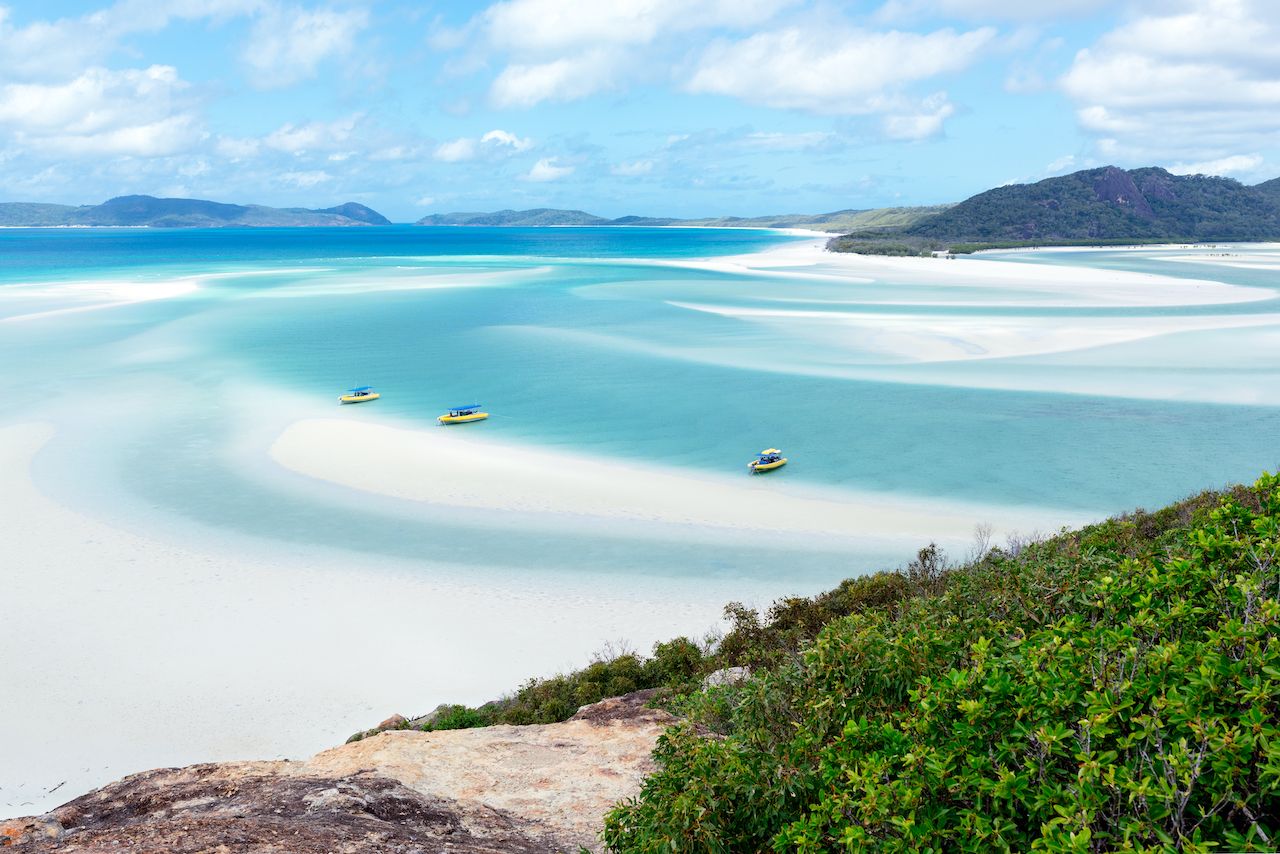
Photo: autau/Shutterstock
The sand of Whitehaven Beach, a 4.3-mile stretch of coast in Queensland’s Whitsunday Islands, is composed of 98 percent silica, which accounts for its fine texture and bright white color. It’s located in the heart of the Great Barrier Reef and is considered one of the cleanest beaches in Australia. The silica also causes the clear waters and shallow sands to assume an impressive swirling pattern and luminescent color. While snorkeling might be the easiest and accessible way to experience the waters, you can also take a helicopter or seaplane for a truly memorable view from above.
22. Crater Lake, USA

Photo: Theerapat Chawannakul/Shutterstock
The main attraction of Oregon’s national park, Crater Lake is known for its dark, deep blue water. The lake sits in a caldera, which was created after the collapse of the Mount Mazama volcano over 7,000 years ago. It’s the deepest lake in the US at around 1,943 feet, as well as the purest, fed largely by rain and snow. Scientists believe Crater Lake is the cleanest and clearest large body of water in the world. In addition to the lake itself, you can explore the volcanic geological remnants left by the volcano’s collapse, including the “Phantom Ship” island formation. There’s also an abundance of old-growth forests, with trees ranging from ponderosa pines to ancient whitebark pines, and wildlife from spotted owls to elk and black bears.
23. Wineglass Bay, Australia
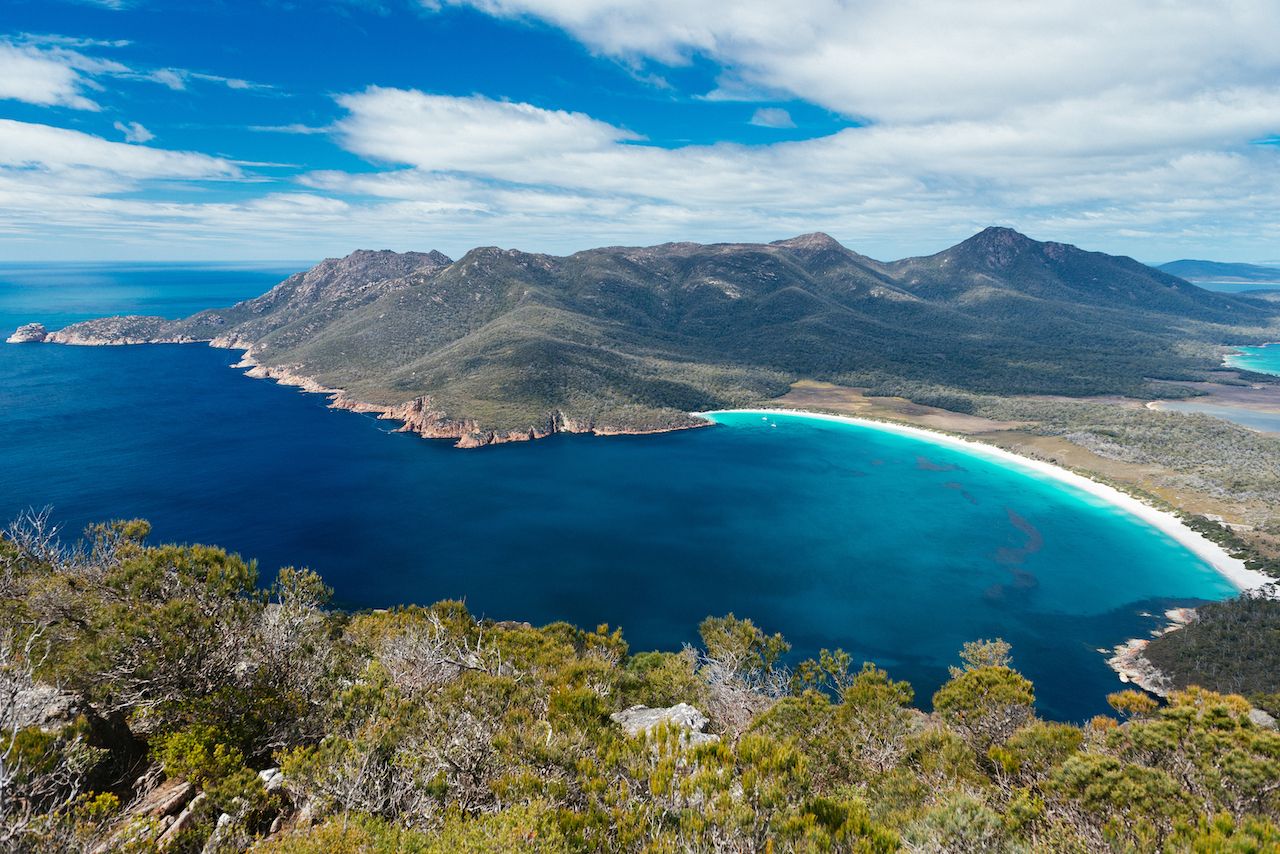
Photo: Henshaw Imagery/Shutterstock
Famous for its white-sand beaches and sapphire waters, Wineglass Bay is a secluded area in Tasmania’s Freycinet National Park. Hiking, sailing, and fishing are popular in Wineglass and Coles Bay, as well as sea kayaking, rock climbing, boating, and bushwalking. Pink granite mountains rise up from the sea to form a sheltered waterway, and there is an abundance of birds (especially white-bellied sea eagles) waiting to be spotted flying over the pristine waters. One of Australia’s top beaches, Wineglass Bay often draws tourists looking to picnic, camp, birdwatch, scuba dive, or go mountain biking.
A version of this article was previously published on August 12, 2014, and was updated on November 3, 2020, with more information.